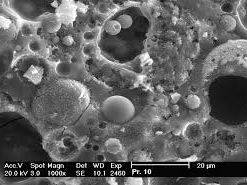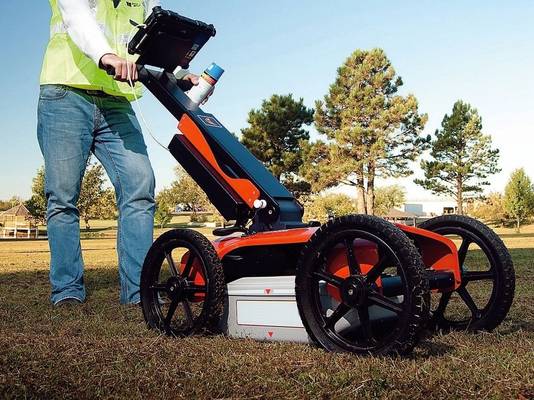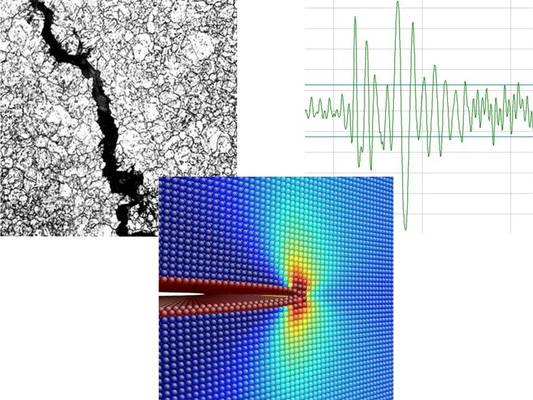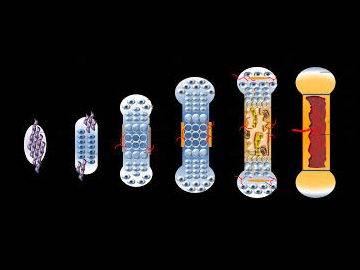Research Groups in
Advanced Building Materials
Alkali-activated Materials and Geopolymers

Leader: doc. RNDr. Pavel Rovnaník, Ph.D.
All activities are focused on basic and applied research and development of new materials based on alkali-activated aluminosilicate binders and geopolymers. The basic direction of research is the use of alternative and waste raw materials for the preparation of alkali-activated materials and the development of new additives for the modification of rheological and other technological properties of these materials. The second area is the study of the electrical properties of these materials with the addition of conductive fillers and their use for applications in smart structures.
GACR: Properties, durability and behaviour of lightweight mortar mixtures with mineral fillers, grant GA CR 21-11516S
GACR: Thermoelectric properties and energy harvesting capability of alkali-activated aluminosilicates with optimized electrical properties, grant GA CR 22-00960S
GACR: Modification of rheological properties of alkali-activated materials by new types of organic additives, grant GA ČR 23-04951S
GPR Measurement, Automation of Measurement Processes and Analysis of Measured Quantities

Leader: prof. Ing. Luboš Pazdera, CSc.
The group is dedicated to the development, measurement, automation of measurement processes and analysis of measured quantities. In particular, it involves the use of GPR, which is used to explore and analyse the structure beneath the surface using radio waves. The GPR sends signals into the ground and, based on the reflected signals from various layers and objects below the surface, allows the creation of an image of the structure. This technique is useful for non-invasive exploration and can provide important information without the need for physical intervention in the environment. Another area of interest for the group is modal analysis, which is used to identify the behaviour of engineering structures due to vibration. It helps in the design and control of structures so that they are not damaged by vibration and shock.
HS122204010 - Radar survey "Library Litomyšl" - GPR survey of the library building with cavity search
Application of the Acoustic Emission Method

Leader: doc. Mgr. Libor Topolář, Ph.D.
Acoustic Emission (AE) is a non-destructive testing method and involves monitoring acoustic signals or emissions generated by a material under stress or deformation. The method is particularly useful for detecting and characterizing damage or defects in materials such as cracks, delaminations and other defects. It is commonly used in industries such as aerospace, construction and manufacturing. One of the main advantages is that it is non-destructive and allows the assessment of materials without damaging them. At the same time, it allows real-time monitoring, providing information on the state of the material during stress or loading.
Modelling Strength, Growth and Remodelling of Bones and Teeth

Leader: prof. Ing. Miroslav Vořechovský, Ph.D.
In collaboration with teams at the Masaryk University Faculty of Medicine, the Technical University of Liberec and other institutions abroad, the group is investigating the distribution of mechanical properties of bones, including their probabilistic description, biomechanics and bone remodelling due to mechanical stresses in order to identify previous loads from CT scans of the skeleton and to optimally target surgical interventions. He is also working to understand the growth process of continuously growing mouse teeth and the dentin/enamel composition of related animals with respect to mechanical stimuli. He is creating digital twins of the skeletal system and other modeled tissues.
Ecological Aspects of Building Materials
Leader: doc. Ing. Nikol Žižková, Ph.D.
the main activity of the group is to support the development of eco-friendly materials and technologies using recycled materials, secondary raw materials, renewable raw materials and other alternative, originally waste substances. The construction industry produces waste and emissions, but can also make very efficient material use of waste generated in other industries. Other activities are related to the European Green Deal, which is intended to steer the EU towards climate neutrality by 2050. The Group is also developing, for example, an advanced cement composite for 3D printing with a lower carbon footprint that also meets demanding technical requirements. The group collaborates with a number of international research institutes such as the University of Malta, the University of Salento and RWTH Aachen University.
Ceramics and Refractories
Leader: doc. Ing. Radomír Sokolář, Ph.D.
In the field of ceramics and refractories, research activities are currently directed mainly to the following areas:
1. Basic research: development and research of anorthite sintered shards, forsterite with the possibility of using more available or even secondary raw materials. An important point of research is also the study of the sol-gel method for possible application in the production of primarily non-formed refractories (refractory concrete). The research work is based on a detailed study of the microstructure of the materials under consideration (mineralogical and chemical composition, porosity, etc.) depending on the different conditions of shard formation (composition of the raw material mixture, firing conditions, etc.) and in the context of the material's utility properties (strength, conductivity, refractoriness, etc.). Applied research. In the field of refractories, it is a long-term partner of PD Refractories and Průmyslová ceramika. Membership in the Guild of Tilers of the Czech Republic and the Silicate Society of the Czech Republic, cooperation with foreign research institutes, such as UKF in Nitra, is beneficial for research.
Materials Based on Renewable Raw Materials
Leader: doc. Ing. Jan Vaněrek, Ph.D.
Within the activities of the research group, analyses are carried out in order to determine the properties of renewable raw materials, especially lignocellulose-based ones. These are mainly wood, wood-based materials, and the use of wood or other plant particles/fibers. Within the developed board materials, the group focuses on the identification of the fibre/matrix interfacial interface using advanced imaging methods or physicochemical analyses. The durability of the materials under development is also being investigated in relation to biotic resistance (resistance to fungi) and to external influences (climatic chambers with the possibility of synergistic interaction of moisture, temperature and aggressive parameters, or UV chambers). Another essential task of the working group is the development of new wood-based construction materials using appropriate hygrothermal or impregnation processes in order to achieve higher performance parameters (strength, stiffness) and higher dimensional stability. In these methods, the group is particularly concerned with the sustainability of the processes. Another dominant activity is the verification of the possibility of using these easily renewable raw material resources in polymer matrix (WPC composites) or to increase the durability of adhesives intended for bonding wooden load-bearing structures as defined in EN 301 (meeting the requirements of EN 302-1, EN 302-2, etc.). Within the framework of international cooperation, the group cooperates e.g. with the Biotechnical Faculty in Ljubljana.
Materials for Rehabilitation of Reinforced Concrete Structures
Leader: doc. Ing. Jiří Bydžovský, CSc.
The group deals with the development of new materials for the rehabilitation of concrete and reinforced concrete structures, in particular behavioural mortars, screeds and surface treatments (coatings) in the sense of EN 1504-2 and EN 1504-3, testing of these materials both in the laboratory and on site as control tests during the rehabilitation of the structure. Designs the rehabilitation of reinforced concrete structures, designs inspection and testing plans.
MELICHAR, J.; DROCHYTKA, R.; BYDŽOVSKÝ, J.; ČERNÝ, V.; ŠTEFFAN, P.; DOHNÁLEK, P.; DOHNÁLEK, J.: CSM_C43; Vodivá správková malta pro opravy stávajících konstrukcí. (funkční vzorek)
DROCHYTKA, R.; BYDŽOVSKÝ, J.; ČERNÝ, V.; FIGALA, P.; PUMPR, V.; DOHNÁLEK, P.; DOHNÁLEK, J.; Systém pro sanaci chemicky atakovaných a namáhaných stavebních konstrukcí. 35311, užitný vzor. (2021)
BYDŽOVSKÝ, J.; BROŽOVSKÝ, J.; DROCHYTKA, R.; JEŘÁBEK, Z.: V005; Metodika pro hodnocení stavu materiálů ve stavebních konstrukcích. (metodika certifikovaná uplatněná)
Lightweight Building Materials
Leader: prof. Ing. Rostislav Drochytka, CSc., MBA., dr.h.c.
The area of research is directly or indirectly lightweight building materials. The dominant area is autoclaved aerated concrete, where the group has recorded significant results especially in connection with the use of secondary raw materials, by-products of production and industrial waste. It has been involved in the development of new energy-efficient porous concrete grades in the lower grades, as well as in the development of grades with a bulk weight of 600 kg/m3. Another important area is lightweight artificial aggregates based on various types of fly ash. It has focused on both aggregates produced by sintering on agglomeration grids and cold-curing aggregates. In the case of sintered aggregates, the group was at the beginning of the renewal of an original production technology capable of producing from potential waste an artificial aggregate capable of competing with the already commonly used expanded clay. The research group also made a significant discovery in its research into the use of waste polyester cupanina. The optimal combination of cupanina and a foam concrete base has resulted in a unique lightweight material that is now protected by a patent. Other areas of interest for the research group are materials such as lightweight plaster and mortar mixes, lightweight floors, etc.
Polymeric Materials
Leader: prof. Ing. Rostislav Drochytka, CSc., MBA., dr.h.c.
The research group investigates the life cycle and develops new types of building materials from polymers with high content of secondary raw materials, including pre-treated hazardous waste. The group's main areas of interest are polymer coatings, polymer mortars, polymer concretes, grouts, remediation compounds, adhesives, hydrophobization, CIPP and SIPP. In all these areas, a number of new progressive materials have been developed. Examples include a highly chemically resistant grout containing treated hazardous waste that is firmly embedded in a polymer matrix. The development of materials based on epoxy and polyurethane resins, research into composites for the rehabilitation of utility networks applied by trenchless technology or new types of waterborne hydrophobicity, which are very environmentally friendly because they do not evaporate toxic solvents, have produced significant results. The Group collaborates with a number of international scientific institutions such as the University of Malta and the University of Salento.
Microstructure and Durability of Building Materials
Leader: prof. Ing. Rostislav Drochytka, CSc., MBA., dr.h.c.
Unique research on silicate and polymer building materials using innovative physicochemical methods is the primary focus of the research group. It investigates the degradation of building materials due to chemically aggressive environments, using various methods that also capture the microstructure of the material. The group uses advanced laboratory methods such as differential thermal analysis, X-ray diffraction analysis, computed tomography and scanning electron microscopy with EDX support. Using these methods, the microstructure of the materials can be examined in detail and their resistance to, for example, carbonation and sulphation can be evaluated in more detail, where it is also possible to describe neoplasms caused by chemical reactions between the aggressive medium and the building material. The Group has developed a range of new highly resistant materials: armoured silicate floors, capable of curing after only 2 hours of implementation, with subsequent high mechanical and chemical resistance, or administrative, masonry, grouting, grouting, coating or adhesive materials for highly aggressive environments such as sewers, silos, etc.
Development of New Progressive Building Materials
Leader: prof. Ing. Rostislav Drochytka, CSc., MBA., dr.h.c.
The main activity of the group is the development of new progressive building materials, in which a suitable combination of classical and high-tech raw materials optimizes the performance parameters and durability of the structures in which they are applied. At the same time, the emphasis in the materials developed is on the implementation of secondary raw materials as far as possible. This reduces production costs and the environmental impact of industrial production. By means of advanced study of the microstructure of these materials, carried out using the most modern laboratory methods (CT, XRD, SEM, etc.), the synergistic effect of all types of feedstock in the resulting materials is maximised. Examples include the development of a system for the remediation of chemically attacked and stressed building structures, the research of electrically conductive silicates for grounding and heating, the study of the effect of the interaction of cement composites with superabsorbent polymers to increase the incorporation of secondary raw materials or the development of cement composites for 3DCP.
Modern Concretes and Mortars
Leader: prof. Ing. Rudolf Hela, CSc.
The group is dedicated to the development of new types of structural concretes using brick or concrete recyclates in fractions of 4 to 22 mm as partial or complete substitutes for natural aggregates. The reason for this is the accumulation of demolition waste and its mere landfilling, while on the other hand the supply of natural aggregates is running out. This research focus includes the use of finely ground brick and concrete recyclates, which can be used as Type II active admixtures instead of cements. At the same time, use in special high-value concretes is also possible. Another focus is the development of cementitious fine-grained composites for 3D printing of precast concrete or monolithic structures with regard to printing conditions, shapes of printed elements and optimal control of the dosage of superplasticizing and accelerating additives during printing. The Group works with a number of foreign departments and manufacturers of building materials not only in Europe, but also in the United Arab Emirates.
Soos,L.,Hela,R.,etc.: lntelligent beam with possibility of stiffness change, international patent, 2023
Classical and Modern Binders
Leader: doc. Ing. Karel Dvořák, Ph.D.
The team works on research and development of modern types of inorganic binders. It focuses on high-value sulphate binders on hemihydrate and anhydrite basis, on lime-based binders and on new types of hydraulic binders derived from Portland cement. The analysis and characterization of the microstructure of binders using a wide range of methods, research on high temperature processes and the study of hydration processes are integral. Currently, the group members are working on LC3 cements, belitic-based cements and CSA cements.
Building Physics and Insulating Materials
Leader: prof. Ing. Jiří Zach, Ph.D.
The main focus of the group is the development of new thermal and acoustic insulation materials based on secondary and easily renewable raw materials. The group also develops new types of advanced insulating materials and super-insulating materials (vacuum insulation panels - VIP). The group studies (mainly) the physical properties of building materials from the point of view of building physics and heat and moisture transport mechanisms. The group also focuses on the reduction of energy consumption of building structures, including the design, development and testing of thermal insulation and remediation plasters and insulation systems. In the theoretical field, the group carries out key studies, assessment of thermal and acoustic properties of building structures (e.g. calculations of thermal properties of masonry according to EN 1745, etc.). The group cooperates with a number of foreign scientific institutions, such as TU Vienna, University of Ljubljana or Vilnius Technical University.
doc. Ing.
Jiří
Bydžovský
CSc.
Research Theme Coordinator Advanced Building Materials